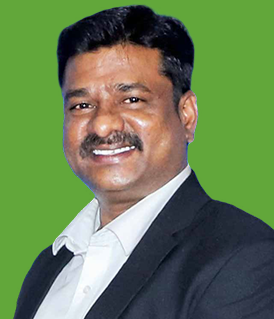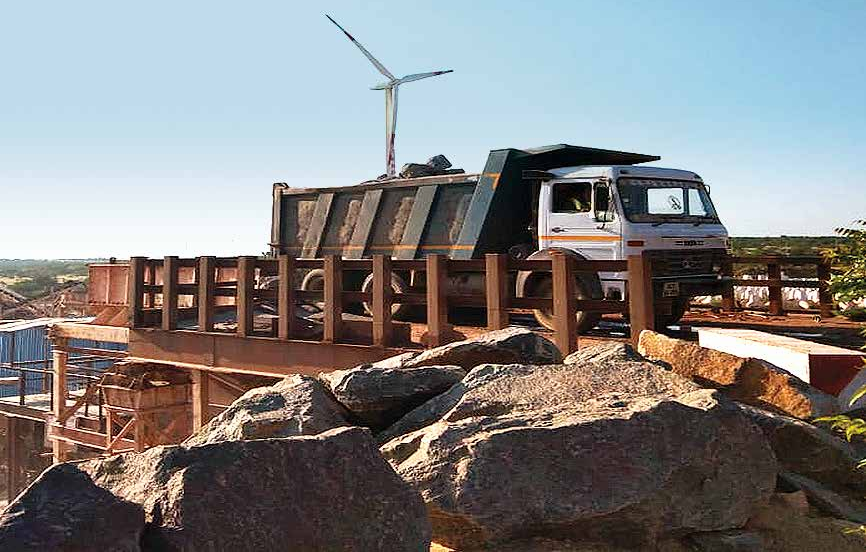
Contributing to about 25% of L&T’s total ‘green’ businesses, Heavy Civil Infrastructure IC is playing a lead role in the Company’s concerted quest to achieve carbon and water neutrality. “Creating awareness is key to promoting environmental change through informed decisions leading to collective action, for which our top management is taking the lead to shape business strategies that prioritize climate change and sustainability at its core,” says Nigel Wirtz, Head – EHS, HCI IC, etching the contours of their strategy. “Initiatives such as renewable energy adoption, transitioning from diesel generators to grid power to reduce Scope 1 emissions, optimizing fuel consumption across projects and machinery, and procuring sustainable power through third-party sources are some of our efforts to foster a sustainable business model,” he adds.

![]()
Creating awareness is key to promoting environmental change through informed decisions leading to collective action, for which our top management is taking the lead to shape business strategies that prioritize climate change and sustainability at its core.
Nigel Wirtz
Head – EHS, HCI IC
![]()
Well on their way to scale ‘green’ peaks
A matter of pride for Mouli Durai, Head – Environment, HCI, is that his IC has already achieved a major share of their short-term goals related to emission intensity and water usage reduction till date. “We have proactively engaged in understanding the intricate ESG materiality specific to the construction industry,” he apprises, “and as part of the Lakshya initiative, detailed projections were made to assess contributors to emission and water intensity. These insights guided the formulation and execution of targeted sustainability initiatives aligned with our overarching neutrality objectives.”
![]()
In FY24 alone, we have implemented 119 initiatives to achieve carbon and water neutrality. In fact, our initiative to migrate from DG to grid power started at the Urban Transit SBG has significantly reduced reliance on diesel generators, which has substantially reduced diesel consumption from 25% to 16%.
Mouli Durai
Head – Environment, HCI IC
![]()


Rainwater harvesting pond at MAHSR C4
Their efforts are being driven by a team of 37 dedicated Environment Engineers stationed at project sites, supported by EHS In-charges across several projects, who have been mandated to translate corporate sustainability goals into actionable strategies through ground-level initiatives, integrating carbon neutrality, water neutrality, and resource efficiency into the EHS framework. To reinforce this commitment, HCI has released multiple guidance manuals under the Sustainability Action Framework (SAF), outlining detailed guidelines for implementing neutrality initiatives at project sites that include SAF for ESG implementation, solar integration, and sewage treatment plant deployment.
“In FY24 alone, we have implemented 119 initiatives (including sewage treatment plants (STPs), rainwater harvesting, e‑vehicles, small-scale solar equipment) to achieve carbon and water neutrality,” says Mouli, with a look of immense satisfaction. “In fact, our initiative to migrate from DG to grid power started at the Urban Transit SBG has significantly reduced reliance on diesel generators, which has substantially reduced diesel consumption from 25% to 16%.”
Renewable energy consumption at MAHSR up 300% in the past 4 years
Vinod Kumar Agarwal (Environment Lead, C4 TFL) and his team at the C4 Package of the MAHSR project is leading the way in sustainability. “We have achieved nearly half of HCI’s total renewable energy generation entirely through decentralized, small-scale renewable solutions such as solar lights, solar blinkers, solar light masts, and solar water heaters,” shares a visibly pleased Vinod, adding that their renewable energy consumption has increased by about 300% in the past 4 years.
![]()
We have achieved nearly half of HCI’s total renewable energy generation entirely through decentralized, smallscale renewable solutions such as solar lights, solar blinkers, solar light masts, and solar water heaters.
Vinod Kumar Agarwal
Environment Lead, C4 TFL
![]()


Water conservation through steam curing at RVNL 04
The team’s focus has been on reducing power consumption and subsequent efficient utilization of energy through energy-efficient initiatives like sky lighting – use of natural light in stores, casting yards, and the noise barrier factories. “Our grid consumption has reduced by 15 lakh kW in the last FY, and CO2 emissions have reduced by 1,200 tonnes by using star-rated appliances, maintaining power factor >0.95, and variable frequency drives,” remarks Vinod.
Water conservation has been another key focus area, and the team has successfully reduced freshwater consumption by a whopping 30% thanks to their 17 STPs. “We have reduced the use of freshwater through rainwater harvesting, steam curing, recycling wastewater, and reusing the water in several of our construction activities,” elaborates Mouli. An innovative technology (Air to Water) of converting humidity in the air to potable drinking water has been attempted at C4 and the site also has a rainwater harvesting pond, which meets the water needs of the site long after the monsoons have retreated.
Other sites jumping onto the ‘green’ bandwagon
Focused on conserving resources and promoting circular economy by using alternative materials, HCI teams are customizing discarded rebar for other purposes to reduce scrap. “We recycle waste concrete, waste scrap, and other waste material within our process activities to promote our mission of reduce, recycle, and reuse like at the Kudankulam Nuclear Power Plant site,” smiles Nigel, and for good reason, for the numbers make for encouraging reading. Currently, 39% of materials used are alternatives. “We actively engage in ecosystem restoration efforts, including beach and lake clean-ups, top-soil restoration, and tree plantations, having planted 45,357 saplings in FY25, with maintenance.”

C&D waste recycling at KKNPP HTS
Driving the DEI agenda
The all-women-run Noise Barrier Factory at the MAHSR C4 project is the best example of women empowerment and a key initiative in the IC’s Diversity, Equality, & Inclusion (DEI) agenda. From planning, budgeting, and manufacturing the concrete barriers, critical to the project, to quality testing and dispatch, all are being expertly managed by the all-ladies team and, in the process, setting standards for innovation and leadership while contributing to one of India’s largest and most prestigious infrastructure projects.
Regular online and at-site training through the IC’s community outreach programmes is being conducted for employees to make them aware of the site’s contribution to environment management and ‘pushing’ awareness campaigns on major topics related to biodiversity conservation, water conservation, waste management, road safety, Swachh Bharat, and more.
“Of course, it is challenging to drive our sustainability agenda considering the scale and complexity of the projects we execute,” says Mouli in conclusion, “but we remain steadfastly committed to implement our environmental initiatives and, at the same time, design and develop new ones to reduce our carbon and water footprint. At the end of the day, we understand that our initiatives are not liabilities but opportunities to positively impact our society.”